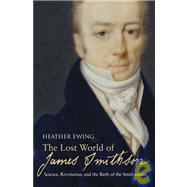
Note: Supplemental materials are not guaranteed with Rental or Used book purchases.
Purchase Benefits
| Maps: The Journey to Staffa | p. ix |
| The Grand Tour 1791-1797 | p. x |
| Prologue 1865 | p. 1 |
| Descended from Kings | p. 19 |
| Oxford: The Lure of Novelty, 1782-l784 | p. 49 |
| Staffa: The Cathedral of the Sea, 1784 | p. 70 |
| London: Science Like Fire, 1784-1788 | p. 98 |
| Science and Revolution, 1788-1791 | p. 125 |
| Grand Tour, 1791-1797 | p. 151 |
| London: Citizen of the World, 1797-1803 | p. 193 |
| The Hurricane of War, 1803-1807 | p. 218 |
| Vibrating between Existence and the Tomb, 1807-1810 | p. 238 |
| London: A New Race of Chemists, 1810-1814 | p. 259 |
| Paris: Private Vices, Publick Benefits, 1814-1825 | p. 271 |
| London: The Will, 1825-1829 | p. 295 |
| America: The Finger of Providence | p. 315 |
| Epilogue 1832 | p. 343 |
| Genealogy Chart | p. 350 |
| Notes | p. 354 |
| Picture Credits | p. 413 |
| Acknowledgments | p. 415 |
| Index | p. 419 |
| Table of Contents provided by Ingram. All Rights Reserved. |
The New copy of this book will include any supplemental materials advertised. Please check the title of the book to determine if it should include any access cards, study guides, lab manuals, CDs, etc.
The Used, Rental and eBook copies of this book are not guaranteed to include any supplemental materials. Typically, only the book itself is included. This is true even if the title states it includes any access cards, study guides, lab manuals, CDs, etc.